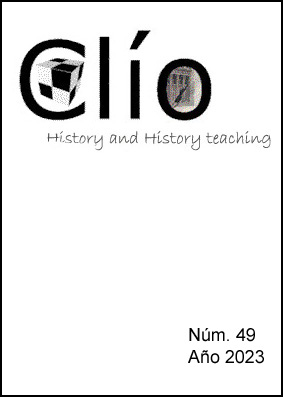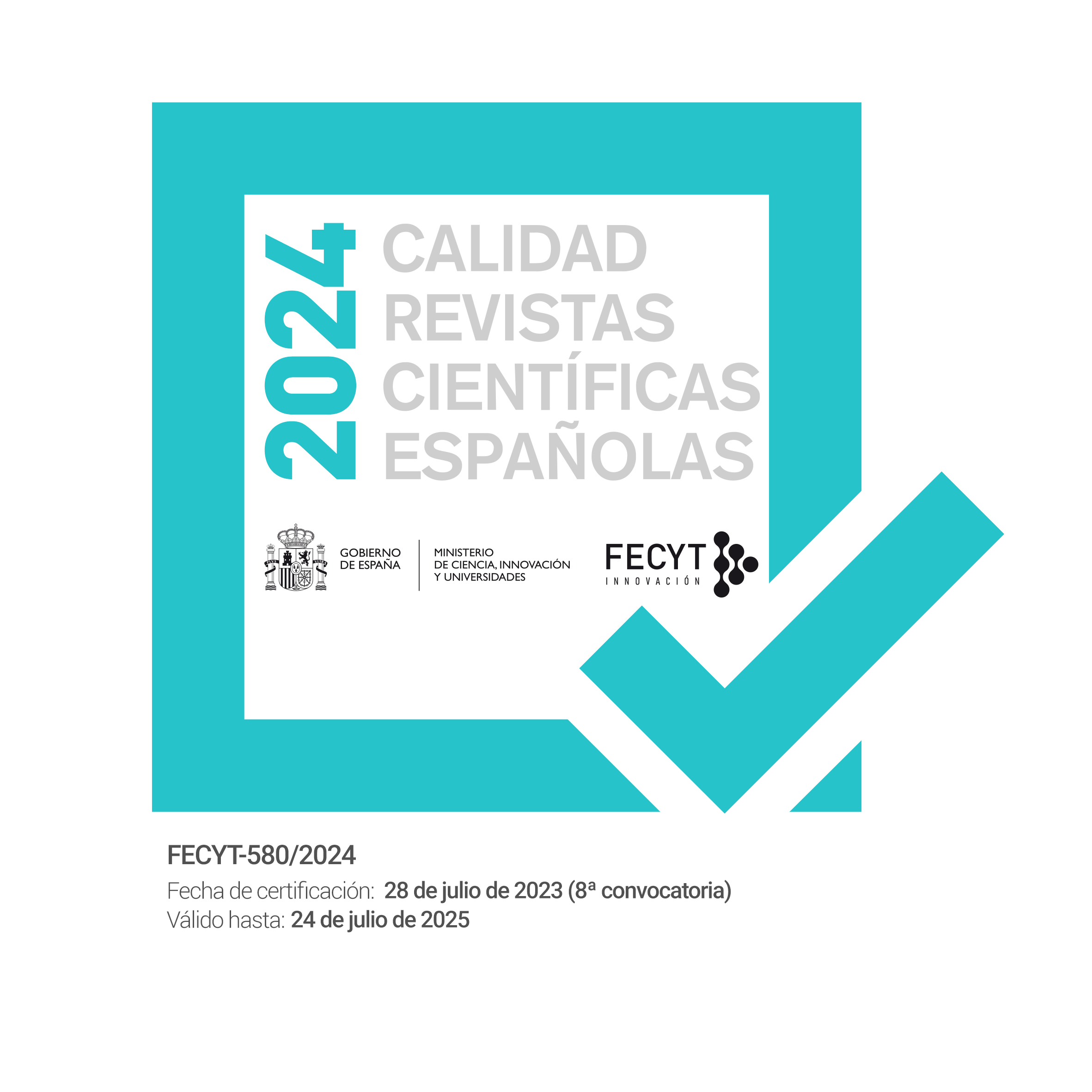El Poder del Arte: Explorando los Beneficios Individuales y Sociales de la Inclusión Artística Transversal, un Estudio Comparativo entre España y Estados Unidos
DOI:
https://doi.org/10.26754/ojs_clio/clio.2023499740Palabras clave:
Educación artística, alfabetización visual, beneficios del arte, equidad en el arte, Plan de estudios (preescolar a doce), España, Estados Unidos, comparaciónResumen
En esta era digital contemporánea, la constante creación y consumo de arte e imágenes visuales se ha vuelto predominante. Sin embargo, sigue existiendo la necesidad imperante de alfabetización visual. Esta investigación explora el impacto positivo de la educación artística en la vida de los estudiantes y aborda las desigualdades en la oferta de clases de arte en España y Estados Unidos. También enfatiza el rol fundamental de la integración de las artes de manera interdisciplinaria y transversal, instando a los encargados de formular políticas educativas a priorizar la educación artística mejorando la legislación educativa y la asignación de recursos. El artículo examina las dificultades para garantizar el acceso equitativo a la educación artística y señala las oportunidades que se pierden cuando las habilidades de alfabetización visual no se desarrollan. Los resultados indican la necesidad de incorporar el arte en el plan de estudios de todas las asignaturas y así promover las habilidades de alfabetización visual. El artículo concluye ofreciendo sugerencias para integrar el arte en las clases obligatorias y promoviendo una educación artística equitativa en las escuelas. Esta investigación contribuye al discurso vigente sobre el potencial transformador de la educación artística en el panorama digital actual.
Descargas
Citas
aavv. (2018). Observatorio de la publicidad en España. Esic Editorial. https://www.esic.edu/editorial/observatorio-de-la-publicidad-en-espana-2018
Aguirre, A. I. (2005). Teorías y prácticas en educación artística: Ideas para una revisión pragmatista de la educación estética. Octaedro. https://doi.org/20.500.12365/17670
Americans for the Arts. (2020, September 8). 10 Arts Education Fast Facts. Americans for the Arts. https://www.americansforthearts.org/by-topic/arts-education/10-arts-education-fast-facts
American Academy of Arts and Sciences. (2021). Art for Life’s Sake. Bulletin of the American Academy of Arts and Sciences, 74(3), 1-28. Art for Life's Sake: The Case for Arts Education (amacad.org)
Australian Curriculum, Assessment and Reporting Authority, ACARA. (2012). Australian Curriculum: The Arts Foundation to Year 10. (Consultation Report). ACARA Copyright Administration.
Barack, L. (2020, September 2). As budget cuts loom, sustaining the Arts is among K-12 challenges. K-12 Dive. https://www.k12dive.com/news/as-budget-cuts-loom-sustaining-the-arts-is-among-k-12challenges/584415/
Bettelheim, B. (1964). Art: a personal vision. In G. D. Stoddard. In I. Edman, & B. Bettelheim (Eds.), Art (pp. 41-64). The Museum of Modern Art. https://doi.org/20.500.12365/17670
Bloom, B. S. (1956). Taxonomy of educational objectives, handbook I. The cognitive domain. David McKay Co Inc. https://doi.org/20.500.12365/17670
Bowen, D. H., Greene, J. P., & Kisida, B. (2014). Learning to Think Critically: A Visual Art Experiment. Educational Researcher, 43(1), 37-44.
https://doi.org/10.3102/0013189X13512675
Braun, V., & Clarke, V. (2006). Using thematic analysis in psychology. Qualitative research in psychology, 3(2), 77. https://doi.org/10.1191/1478088706qp063oa
Bretschneider, P., Cirilli, S., Jones, T., Lynch, S., & Wilson, N. (2017). Document review as a qualitative research data collection method for teacher research. In Sage Research Methods Cases Part 2. SAGE Publications, Ltd. https://doi.org/10.4135/9781473957435
Burton, J. M., Horowitz, R., & Abeles, H. (2000). Learning in and Through the Arts: The Question of Transfer. Studies in Art Education, 41(3), 228–257. https://doi.org/10.2307/1320379
Cabedo-Mas, A., Nethsinghe, R., & Forrest, D. (2017). The role of the arts in education for peacebuilding, diversity and intercultural understanding: A comparative study of educational policies in Australia and Spain. International Journal of Education and the Arts, 18(11), 1-27.
Castelló-Martínez, A., Pino-Romero, D., & Ramos-Soler, I. (2014). Twitter como canal de comunicación corporativa y publicitaria. Communication & Society / Comunicación y Sociedad, 27(2), 21-54.
https://dadun.unav.edu/bitstream/10171/36269/1/20140331112945.pdf
Chung, S. K. (2013). Critical Visual Literacy. The International Journal of Arts Education,11(2), 1-36.
Clapp, E. P., & Ho, C. K. (2023). Arts Education. In The Palgrave Encyclopedia of the Possible (pp. 134-145). Cham: Springer International Publishing.
https://link.springer.com/referenceworkentry/10.1007/978-3-030-90913-0_56
Clark, V., & Braun, V. (2018). Using thematic analysis in counseling and psychotherapy research: A critical reflection. Counseling and Psychotherapy Research, 18(2), 107-110. https://doi.org/0.1002/capr.12165
Cruz, B. C. & Vera Muñoz, M. I. (2020). Haciendo lo invisible, visible: el uso del arte comprometido y feminista en la educación secundaria. Una propuesta didáctica. Estudios, 40, 1-24.https://doi.org/10.15517/re.v0i40.42022
Dootson, P. (2020). 3.2 billion images and 720,000 hours of video are shared online daily. Can you sort real from fake? QUT the University for the Real World. https://www.qut.edu.au/study/business/insights/3.2-billion-images-and-720000 hours-of-video-are- shared-online-daily.-can-you-sort-real-from-fake
EACEA. (2009). Educación artística y cultural en el contexto escolar europeo. Bruselas: Agencia Ejecutiva en el Ámbito Educativo, Audiovisual y Cultural.
Egana-delSol, P. (2023). The impacts of a high-school art-based program on academic achievements, creativity, and creative behaviors. Npj Science of Learning, 8(39), 1-17. https://doi.org/10.1038/s41539-023-00187-6
Fernández Abad, B. (2015). Influencia de la cultura visual y el currículum de educación artística en la construcción de identidad de los jóvenes: un estudio de casos con estudiantes de 1º de la ESO (Doctoral dissertation, Universidad Miguel Hernández de Elche). RODERIC. https://roderic.uv.es/handle/10550/47664
Fontal-Merillas, O. (2015). El patrimonio a través de la educación artística en la etapa de primaria. Arte, Individuo y Sociedad, 27(2), 265-280.
https://doi.org/10.5209/rev_ARIS.2015.v27.n2.49118
Garrido, P. P., Fernández-Fernández, P., & Baños-González, M. (2014). Estrategias ante la nueva situación tecnológica y económica del sector publicitario español. Revista Mediterránea de Comunicación, 5(2),1-20. https://doi.org/10.14198/MEDCOM2014.5.2.07
Graham, K. A. (2023, May 11). More than 300 Masterman students, parents protest planned schedule changes that cut art and music for some. MSN. https://www.msn.com/en-us/money/careersandeducation/more-than-300-masterman-students-parents-protest-planned-schedule-changes-that-cut-art-and-music-for-some/ar-AA1b3Phd
Guest, G., MacQueen, K. M., & Namey, E. E. (2012). Applied Thematic Analysis. Sage.
Juárez Mendoza, A. (2020). Beautiful resistance: Testimonio art, youth organizing, and collective desahogo. Journal of Curriculum and Pedagogy, 17(3), 288-294.
https://doi.org/10.1080/15505170.2020.1786749
Kvale, S. (1996). InterViews: An Introduction to Qualitative Research Interviewing. Sage Publications.
Jones, K. (2004). Mission drift in qualitative research, or moving toward a systematic review of qualitative studies, moving back to a more systematic narrative review. Qualitative Report, 9(1), 95-112. 10.46743/2160-3715/2004.1939
Kędra, J., & Žakevičiūtė, R. (2019). Visual literacy practices in higher education: What, why and how? Journal of Visual Literacy, 38(1-2), 1-7.
https://doi.org/10.1080/1051144X.2019.1580438
Ley Orgánica, 3/2020, de 29 de diciembre, por la que se modifica la Ley Orgánica 2/2006, de 3 de mayo, de Educación. (2020). Boletín Oficial del Estado [Official State Gazette] (BOE-A-2020-17264). https://www.boe.es/eli/es/lo/2020/12/29/3
Moreno-Vera, J.R., López-Fernández, J.A. & Ponsoda López de Atalaya, S. (2022). La concepción del patrimonio en el profesorado en formación de Educación Infantil [The conception of heritage in the teacher training of Early Childhood Education]. Profesorado. Revista de currículum y formación del profesorado, 26(1), 439-458.
https://doi.org/10.30827/profesorado.v26i1.13789
Moreno-Vera, J.R., Ponsoda-López de Atalaya, S., López-Fernández, J.A., & Blanes-Mora, R. (2020). Holistic or traditional conceptions of heritage among early-childhood and primary trainee teachers. Sustainability,12(21)1-12. https://doi.org/10.3390/su12218921
Moreno Vera, J. R., & Vera Muñoz, M. I. (2012). Utilizando el relato artístico para enseñar ciudadanía. Una propuesta didáctica. In XXIII Simposio Internacional de Didáctica de las Ciencias Sociales (2012, March 13–15, Sevilla, Spain) (pp. 489-494). Díada Editora.
Moreno Vera, J. R., Vera Muñoz, M. I., Miralles Martínez, P., & Trigueros Cano, F. J. (2013). El retrato en Educación Infantil: una propuesta didáctica sobre arte. Clío & Asociados, (13), 249-266. http://hdl.handle.net/10045/37178
National Art Education Association. (2023, April 3). ArtScan. Arts Education Partnership. https://www.aep-arts.org/artscan/
Naz,N., Gulab, F, & Aslam, N. (2022). Development of Qualitative Semi-Structured Interview Guide for Case Study Research. Competitive Social Sciences Research Journal (CSSRJ), 3(2), 42-52.
Ovid, D., & Leonardo, Z. (2022). She blinded me with science: Postcurriculum and the new science. Journal of Curriculum Theorizing, 37(2).
Özsoy, V., & Sari̇baş, S. (2021). Developing Visual Literacy Skills in Teacher Education: Different Ways of Looking at the Visual Images. Educational Policy Analysis and Strategic Research, 16(3), 67-88. https://doi.org/10.29329/epasr.2021.373.5
Profesorado del Área de Didáctica de la Expresión Plástica/Educación Artística y Visual de las universidades del Estado español. (2020). Manifiesto educación no sin artes [Education not without arts manifesto]. (Plataforma Educación No Sin Artes). https://educacionnosinartes.org/manifiesto/
Simpson, J. (2017, August 25). Finding brand success in the digital world. Forbes. https://www.forbes.com/sites/forbesagencycouncil/2017/08/25/finding-brand-success-in-the-digital-world/?sh=515ffc75626e
Descargas
Publicado
Cómo citar
Número
Sección
Licencia
Derechos de autor 2023 Bonnie Gómez Torres, Courtney N. Callahan

Esta obra está bajo una licencia internacional Creative Commons Atribución-NoComercial-CompartirIgual 4.0.
Este trabajo tiene una licencia internacional Creative Commons Attribution-NonCommercial-ShareAlike 4.0 International License.
Los derechos de autor siguen siendo propiedad de los autores. Se debe obtener permiso de los autores para la reimpresión y el contenido de JoS no se puede copiar con fines comerciales. JoS, sin embargo, se reserva el derecho de reproducción futura de artículos en copia impresa, formato de documento portátil (.pdf) o ediciones HTML de JoS.






